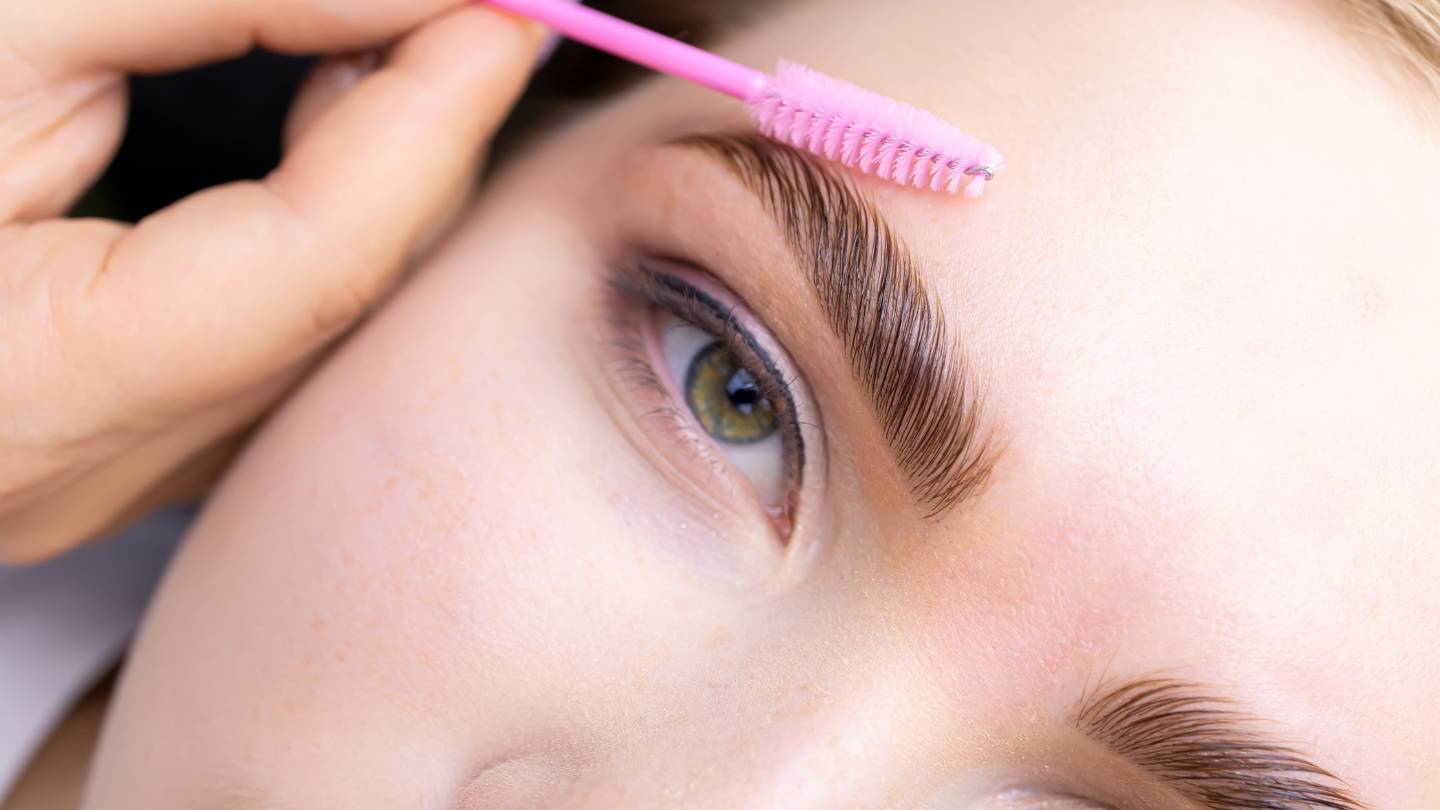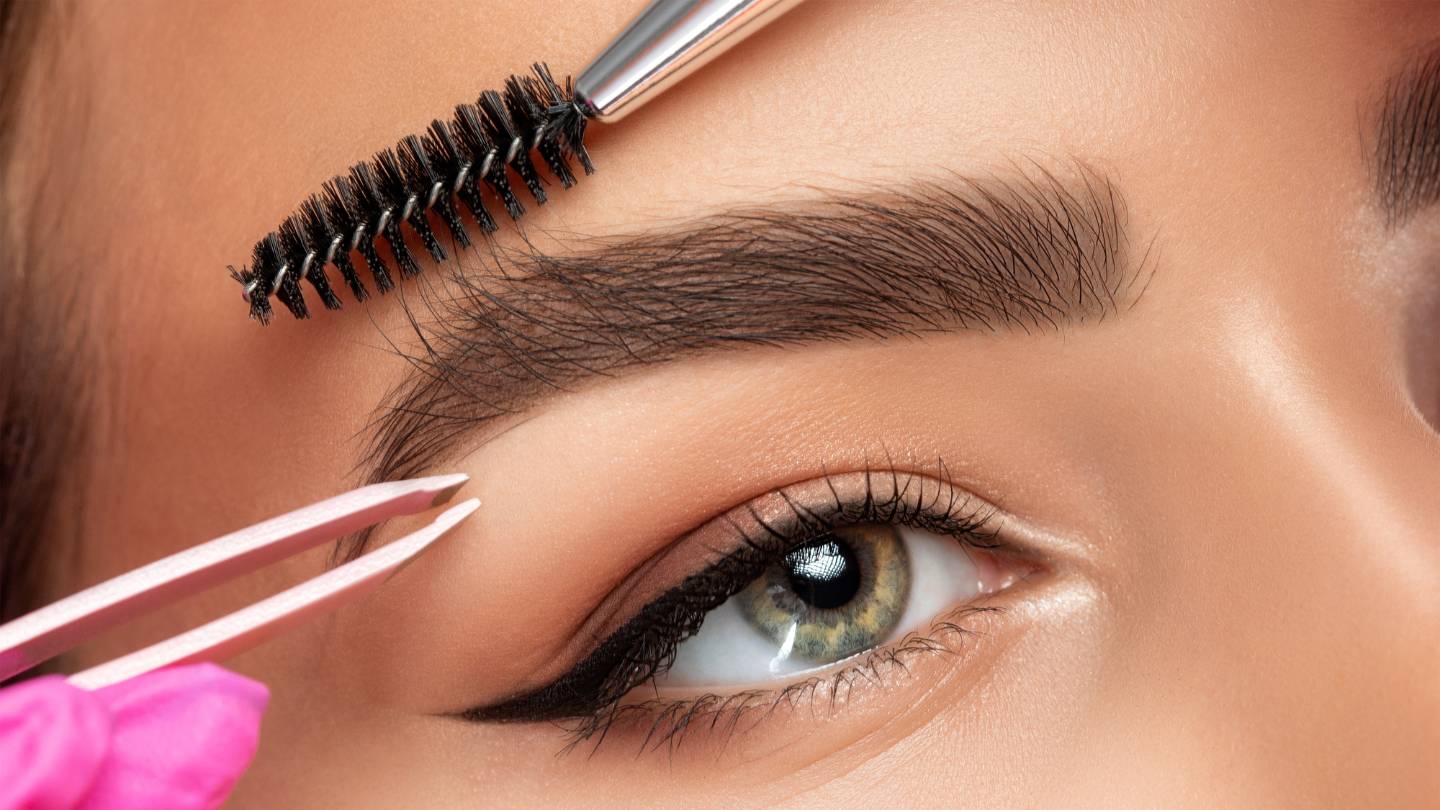Eyebrow feathering is a semi-permanent makeup technique that uses fine, hair-like strokes to enhance the natural appearance of the eyebrows. This method helps create fuller, more defined brows that appear natural and lifelike.
Unlike traditional eyebrow tattooing or microblading methods, eyebrow feathering produces a softer, more realistic finish that mimics the natural growth pattern of eyebrow hair.
Let’s get straight to the point.
Eyebrow feathering is a semi-permanent technique that uses fine strokes to mimic natural eyebrow hair. It offers a more subtle and lifelike look than other methods, such as eyebrow tattooing, microblading, and powder brows.
Feathering creates softer, more natural results, unlike the permanent and often bold appearance of tattooed or microbladed brows. It lasts 12-24 months, is customisable to individual preferences, and has minimal recovery time.
This technique has gained popularity for its ability to deliver full, well-defined, natural-looking brows that adapt to changing trends.
Differences Between Eyebrow Feathering And Other Methods
While eyebrow feathering shares similarities with other cosmetic procedures, it stands out due to its approach and the final results it delivers.
Let’s explore how eyebrow feathering compares to popular techniques, such as eyebrow tattooing, microblading, and powder brows.
1. Eyebrow Tattooing
Traditional eyebrow tattooing involves injecting pigment deep into the skin using a needle, resulting in a permanent brow shape. This method is one of the earliest eyebrow enhancement techniques, but it has distinct advantages and drawbacks compared to eyebrow feathering.
Advantages Of Eyebrow Tattoos:
- Long-lasting Results: Eyebrow tattoos can last up to five years or even longer, making them an option for those who prefer a long-term solution without frequent touch-ups.
- Low Maintenance: Since the results are permanent, there is less need for regular upkeep compared to semi-permanent methods like microblading or feathering.
Disadvantages:
- Lack of Flexibility: Tattooed brows are permanent but can become problematic as facial features change with age. For example, brows that once suited your youthful appearance may start to look out of place or harsh as you age.
- Unnatural Appearance: Eyebrow tattoos often create solid, blocky shapes rather than individual hair strokes, which can result in a less natural look. Over time, the pigment may fade to an unnatural hue, such as blue or green.
- Difficult to Modify: Adjusting the shape or colour of tattooed eyebrows can be challenging, often requiring laser removal, which can be painful, costly, and time-consuming. Unlike feathering, which allows for gradual fading and periodic touch-ups, eyebrow tattoos lack this flexibility.
2. Microblading
Microblading is a semi-permanent technique similar to eyebrow feathering in that it uses fine strokes to replicate the look of individual hairs. However, there are key differences between the two methods in terms of the results and application.
Advantages Of Microblading:
- Defined Results: Microblading creates sharp, well-defined lines that give the eyebrows a structured and bold appearance. It is ideal for individuals seeking a more pronounced brow shape.
- Semi-Permanent: Microblading typically lasts 12 to 18 months, allowing for adjustments or changes. This semi-permanence makes it easier to update the look as trends or personal preferences shift.
Disadvantages:
- Bolder Appearance: Microblading can sometimes appear too bold for those seeking a more subtle or natural look. The lines created during microblading tend to be more prominent than the softer, more delicate strokes used in eyebrow feathering.
- Frequent Touch-ups: While microblading is semi-permanent, the pigment fades relatively quickly, requiring regular touch-ups to maintain the desired look. This can increase maintenance over time.
- Potential for Discomfort: Since microblading involves cutting the skin, some clients experience more discomfort during and after the procedure than feathering, which typically uses finer strokes and causes less irritation.
3. Powder Brows
Powder brows, or ombré brows, are a technique in which pigment is applied to create a soft, powdered effect that mimics the appearance of eyebrow makeup. This method is great for achieving a polished look but differs significantly from feathering in its finish and overall aesthetic.
Advantages Of Powder Brows:
- Makeup-Like Finish: Powder brows are ideal for those who prefer a more polished and defined look. The technique creates a gradient effect, with the tail of the brows appearing darker and the fronts lighter, similar to how brows look when filled in with makeup.
- Longer-Lasting Results: Powder brows can last longer than microblading, often maintaining their appearance for up to two years before requiring touch-ups. The soft shading effect remains even as the pigment begins to fade.
Disadvantages:
- Less Natural: Powder brows do not replicate individual hair strokes, making them less natural-looking compared to eyebrow feathering. This technique gives more of a “makeup” look, which may not be suitable for those who want a subtle enhancement.
- Bolder Finish: For individuals seeking a minimalist or barely-there brow, powder brows might be too intense, as the shaded effect can appear overly defined, especially for those with lighter hair or who prefer a more natural appearance.
Why Is Eyebrow Feathering A Popular Choice?
Eyebrow feathering has gained popularity for its ability to create a more natural and sophisticated look.
Unlike traditional methods, feathering delivers results that blend seamlessly with your natural hair, giving the appearance of fuller, well-groomed brows without the heavy, drawn-on effect of tattooing or microblading.
Key Benefits Of Eyebrow Feathering:
- Natural Appearance: The fine, individual hair strokes mimic real eyebrow hair, making the results appear more natural.
- Customised Results: Technicians tailor the shape and colour to each client’s facial structure and preferences.
- Semi-Permanent: Lasting up to 12-24 months, the results gradually fade, allowing for adjustments as trends and personal preferences change.
- Minimal Recovery Time: While some redness and swelling are expected, recovery is relatively quick, with most clients returning to their routine within a few days.
Considerations Before Getting Eyebrow Feathering
Before undergoing eyebrow feathering, it’s important to consult with a qualified technician to discuss your desired look and assess whether the procedure is suitable for you.
Factors To Consider:
- Skin Type: Those with oily skin may experience faster pigment fading and need more frequent touch-ups.
- Medical Conditions: Individuals with certain skin conditions or those on medications like blood thinners should consult their healthcare provider before the procedure.
- Maintenance Commitment: While feathering is semi-permanent, periodic touch-ups are required to maintain the desired appearance.
Equipment Used In Eyebrow Feathering
The tools and supplies used in eyebrow feathering are critical to achieving natural results. These include:
- Microblade or Microstroking Pen: Fine needles create individual hair-like strokes.
- Topical Numbing Cream: Applied before the procedure to reduce discomfort.
- Pigments: Semi-permanent colours specifically designed for eyebrows.
- Mapping Tools: Uploading the perfect shape based on the client’s face.
- Aftercare Products: Healing ointments and instructions for post-procedure care.
Conclusion
Eyebrow feathering offers a modern, semi-permanent solution for those seeking natural-looking, fuller eyebrows. This method stands out for its ability to mimic real hair, creating a subtle, refined appearance that enhances the face without appearing overly made-up.
Compared to traditional eyebrow tattooing or microblading, feathering is less invasive, offers more customisation, and delivers results that blend seamlessly with your natural brows.
Following proper aftercare and maintaining the results with occasional touch-ups, clients can enjoy beautifully shaped brows that last up to two years.
Whether you want to enhance sparse brows or achieve a more polished look, eyebrow feathering provides a versatile and natural option.
FAQs About Eyebrow Feathering
What Is Eyebrow Feathering?
Eyebrow feathering, also known as microblading, is a semi-permanent cosmetic procedure where fine lines are etched into the skin to mimic the appearance of natural eyebrow hairs. This technique involves using a handheld tool with tiny needles to create hair-like strokes, resulting in fuller and more defined eyebrows.
How Does Eyebrow Feathering Differ From Traditional Tattooing?
Unlike traditional tattooing, eyebrow feathering is a form of manual, semi-permanent makeup. The pigment used in feathering is less concentrated, giving a softer, more natural look. Additionally, the strokes created in feathering mimic the natural growth pattern of eyebrows, providing a more realistic and subtle result compared to the solid color often associated with traditional tattooed brows.
How Long Does Eyebrow Feathering Last?
Eyebrow feathering is a semi-permanent technique, and its longevity can vary depending on factors such as skin type, lifestyle, and aftercare. Generally, it can last anywhere from 1 to 3 years. Periodic touch-ups are recommended to maintain the desired shape and color.
Is Eyebrow Feathering Suitable For Everyone?
While eyebrow feathering is a versatile technique, it may not be suitable for everyone. Individuals with certain skin conditions, pregnant or nursing women, and those prone to scarring may need to consult with a professional before undergoing the procedure. A qualified technician can assess individual suitability and provide personalized advice.
What Is The Recovery Process After Eyebrow Feathering?
The recovery process for eyebrow feathering is relatively quick. Some redness and minor swelling may occur immediately after the procedure, but this typically subsides within a few hours to a day. It’s important to follow the aftercare instructions provided by the technician, which may include avoiding excessive moisture and sun exposure during the initial healing period.


